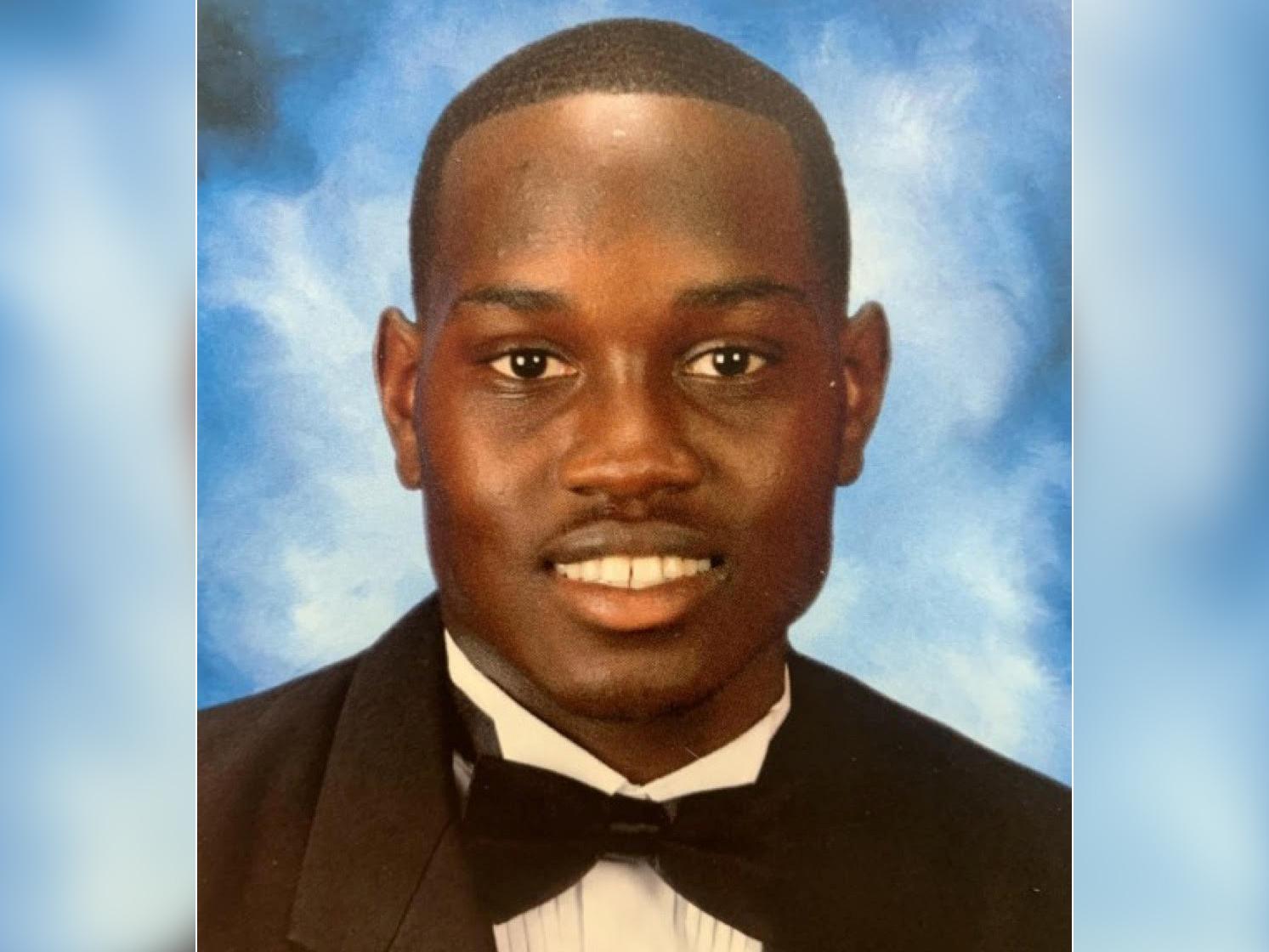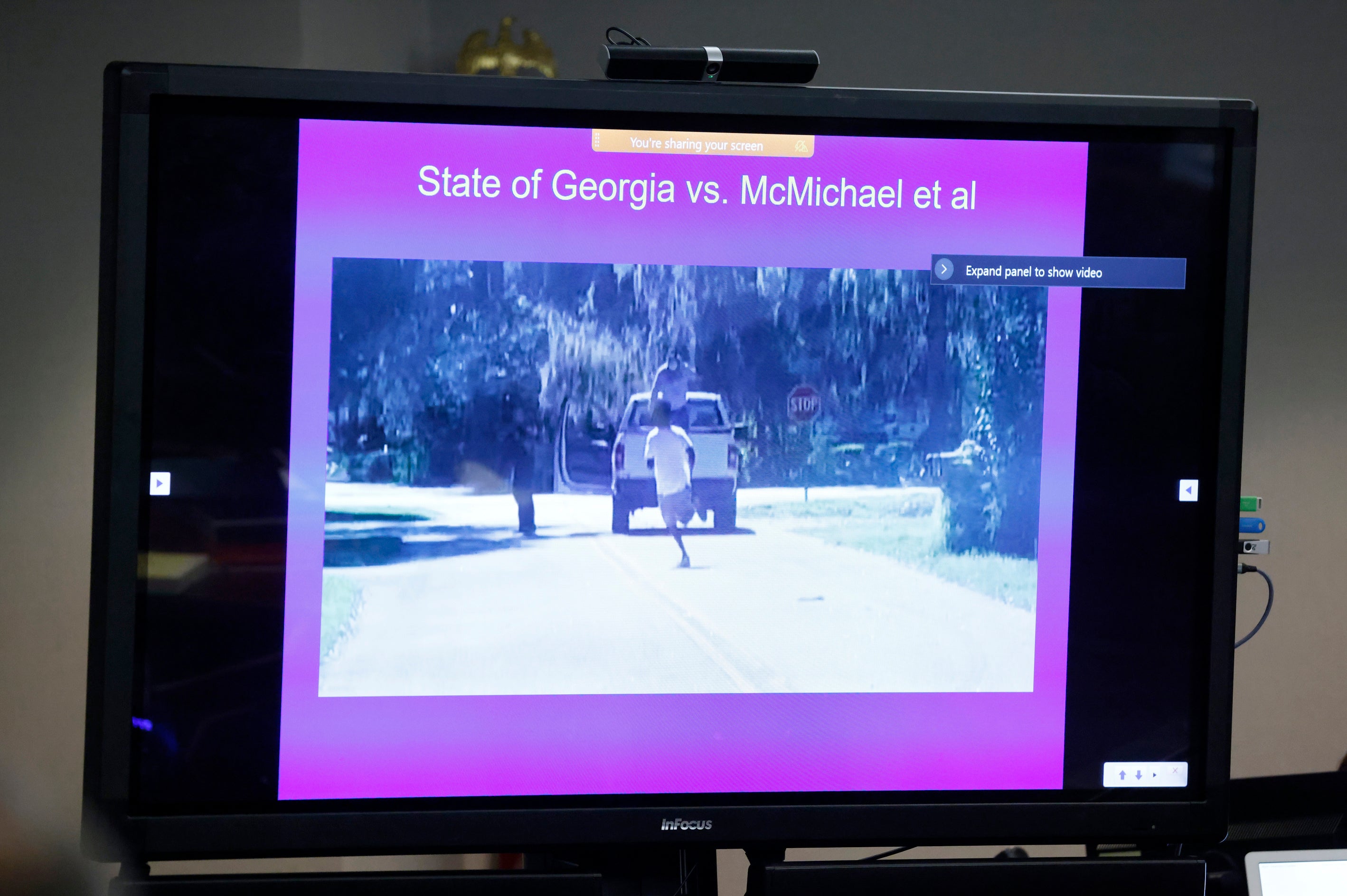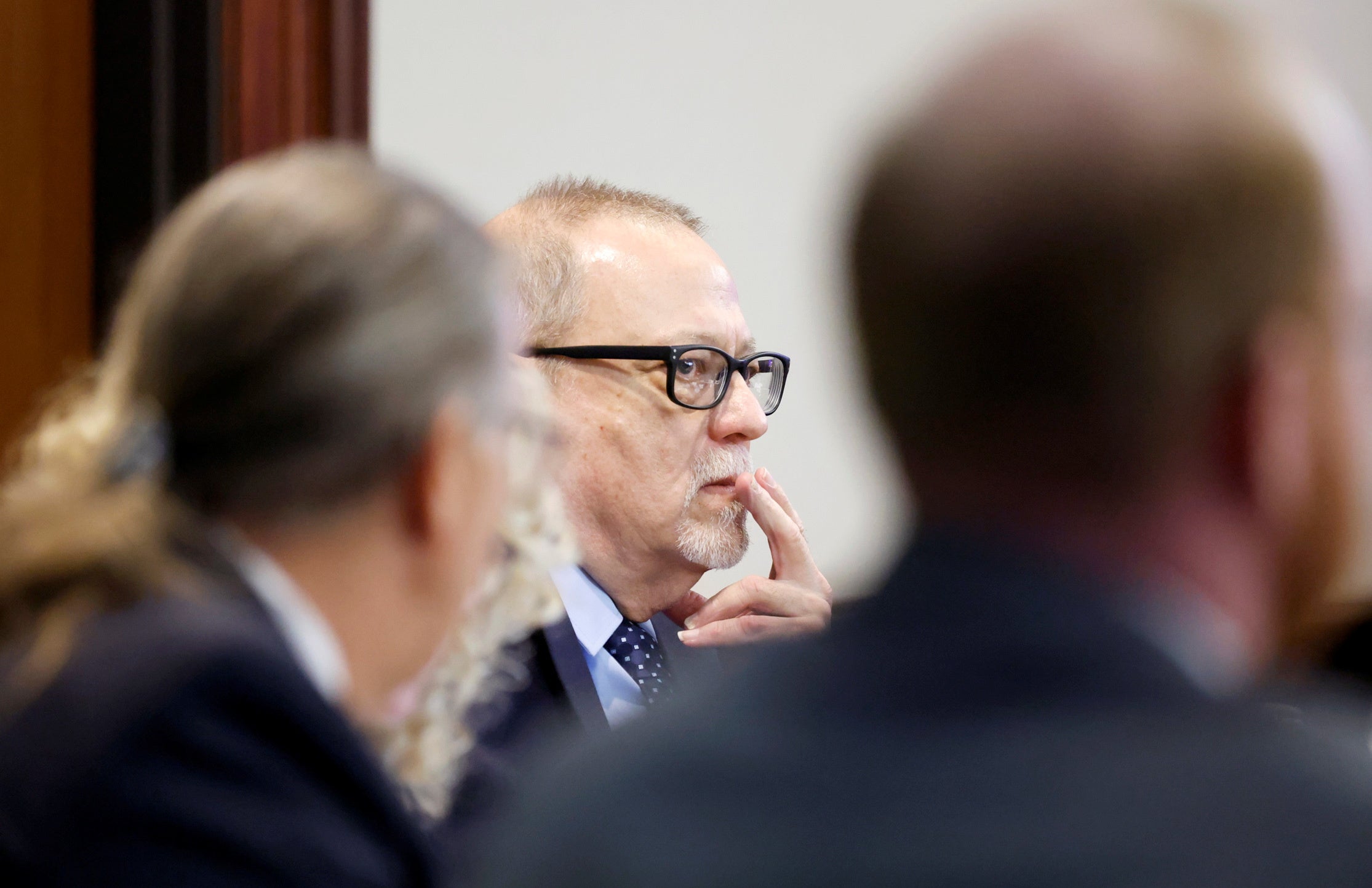Ahmaud Arbery: Community was ‘on edge’ from spike in crime and the Black jogger was ‘suspicious’, defence claims
Travis McMichael’s defence attorney Bob Rubin says the 35-year-old was acting out of ‘duty and responsibility’ in opening statement
The Georgia community where Ahmaud Arbery was chased and shot by three white men had been “on edge” following a spike in crime and the Black jogger appeared to be “suspicious”, the defence claimed in their opening arguments on Friday.
Travis McMichael’s defense attorney Bob Rubin gave his opening statement on Friday afternoon on the first day of the murder trial, following the prosecution’s opening statement that morning.
Mr Rubin said the 35-year-old was acting out of “duty and responsibility” to his local community when he shot Mr Arbery dead on 23 February 2020.
He said Travis McMichael had come “face-to-face” with Mr Arbery 12 days earlier on 11 February when he said the Black 25-year-old was breaking into a home under construction in the neighbourhood.
On that occasion, the defence claimed Mr Arbery put his hand into his pocket which Travis McMichael had taken as a sign he could have been armed.
The defence claimed that this led Travis McMichael to fear that Mr Arbery may be armed on the day of his shooting.
The defence also claimed that Travis McMichael armed himself with his gun in order to “deescalate the situation” on 23 February because his years of training in the US Coast Guard taught him that this is how to “get compliance”.
Mr Arbery was unarmed at the time of his death.
Attorneys for the three defendants are delivering three separate opening statements in the trial.
The attorney for Travis McMichael’s father Gregory McMichael gave his opening statement later on Friday afternoon while the attorney for their neighbour William “Roddie” Bryan Jr has made the unusual request to give his opening statement after the prosecution rests its case at the end of the trial.
Mr Arbery was jogging through the Satilla Shores neighbourhood near Brunswick, Georgia, on 23 February 2020 when the McMichaels grabbed guns and jumped in their pickup truck to chase him.
Their neighbour Mr Bryan also joined in the pursuit, following in his pickup truck and filming the incident on his smartphone.
The footage captured Travis McMichael shooting Mr Arbery three times with his shotgun.
Mr Arbery collapsed to the ground and died.
The three defendants all face nine charges, including malice murder, four counts of felony murder, two counts of aggravated assault, false imprisonment, and criminal attempt to commit false imprisonment. They have all pleaded not guilty to the charges.
Senior Assistant District Attorney Linda Dunikoski said in the prosecution’s opening statements on Friday morning that Gregory and Travis McMichael had been told by cops that he wasn’t a burglar just days before they allegedly chased the Black 25-year-old and shot him dead in the street.
The prosecutor also shared statements from the suspects where they admitted they did not believe he had stolen anything from the home under construction in the area.
“I don’t think the guy has actually stolen anything out of there,” Gregory McMichael told investigators, she said.
The three suspects have claimed they were attempting to carry out a citizen’s arrest of Mr Arbery when he was shot dead, because they believed he was responsible for burglaries in the area.
The court also heard that the three white men were chasing the Black man for five minutes in their pickup trucks with Gregory McMichael telling cops they had him “trapped like a rat”.
Mr Arbery was “under attack by strangers who were intent to kill him”, said the prosecutor.

In the defence’s opening statement, Mr Rubin told jurors that Travis McMichael had drawn on his years of training in the US Coast Guard on the day that Mr Arbery was killed.
He said the shooting had come after the Satilla Shores neighbourhood had faced an “uptick in crime” which left residents “on edge”.
The defense pointed to a neighbourhood Facebook group where residents had made posts including: “I’m nervous” and “Lock your cars”.
“This case is about duty and responsibility. It’s about Travis McMichael’s duty and responsibility to himself, to his family and to his neighbourhood and it’s about your duty and responsibility as jurors,” Mr Rubin said.
Mr Rubin pushed back at the suggestion that Mr Arbery would go jogging through the neighbourhood.
Instead, he said Mr Arbery had only been seen at night on surveillance cameras multiple times at a home under construction belonging to Larry English in the months leading up to his death.
Mr Rubin said Mr Arbery was a “scary mystery” in the community.
“The only time we see Ahmaud Arbery at Satilla Shores is at night on cameras,” he said.
“If he was there jogging in the daytime you would see that.”

Mr Rubin asked: “Was he out for a jog at 10 o’clock at night on December 17 or was he doing something else? And we’ll never know but it sure does look suspicious.”
He said Mr Arbery was seen for the fourth time on 11 February when Travis McMichael saw him at the property.
The jury heard a clip from a 911 call made by Travis McMichael that night where he said he thought Mr Arbery may be armed.
“When I turned around and saw him and backed up, he reached into his pocket and ran into the house,” Travis McMichael said on the 911 call.
“So I don’t know if he’s armed or not, but he looked like he was acting like he was. So you know be mindful of that.”
Mr Rubin said Travis McMichael “has now seen Ahmaud Arbery face-to-face for the first time” and had “probable cause to believe a burglary had been committed”.
On the day of the shooting, the attorney said Travis McMichael had three encounters with Mr Arbery where he and his father had pulled beside him in their pickup and told him to stop.
He claimed that Mr Arbery would not have been able to see the McMichaels were armed at that time because the shotgun was between the seat and Gregory McMichael’s handgun in his holster.
Travis McMichael was “scared” that Mr Arbery was armed, he claimed.
He said the McMichaels called 911 before the first shot was fired which he said was “not evidence of an intent to murder”.
Mr Rubin instead claimed Mr Arbery “acted bizarrely” and “ran at” Travis McMichael and that the white man got out the pickup truck and showed his weapon to “deescalate the violence”.
“Travis’ training taught him to show a weapon – not to use a weapon – as that is a way to deescalate violence as they get compliance,” he said.

He claimed that the 35-year-old then raised his weapon and pointed it at Mr Abery because he didn’t stop running toward him.
“At about 20 yards he raises the weapon,” said Mr Rubin.
“He didn’t shoot his weapon. He was trying to deescalate the situation in compliance with nine years of training in the Coast Guard.”
Mr Rubin claimed Travis McMichael then shot Mr Arbery in “self-defense” because the Black man tried to take the gun from him.
He claimed he thought that it was “my life or his life” and that the “only thing he can think of is [his son] Everett”.
Gregory McMichael’s attorney Frank Hogue said in his opening statement that his client believed Mr Arbery was going to take the shotgun from his son.
Judge Walmsley ruled on a number of motions on Friday morning before the jury was sworn in.
He denied a request from the defence to allow the jury to hear that Mr Arbery was on probation at the time he was killed.
He also denied a second request from the defence to blur out the licence plate on Travis’ pickup truck because it featured the Confederate flag.
Following the prosecution’s opening statement, the judge also said would not grant the defense a mistrial.
One of the defence lawyers had objected to the prosecutor raising the issue of the time gap between the time of Mr Arbery’s death and the arrest of the suspects - something which he had previously said could not be mentioned in front of the jury.
The racially-charged trial has already been mired in controversy after an almost all-white jury was selected on Wednesday in a move the prosecution described as an act of discrimination on the part of the defence.
Out of 12 jurors selected, 11 are white and only one is Black.
Judge Timothy Walmsley said the court had found “intentional discrimination” by the defence but he allowed the case to move forward anyway.
On Thursday afternoon, one of the seated jurors - a white woman - was dismissed for undisclosed medical issues and replaced with another white juror.


